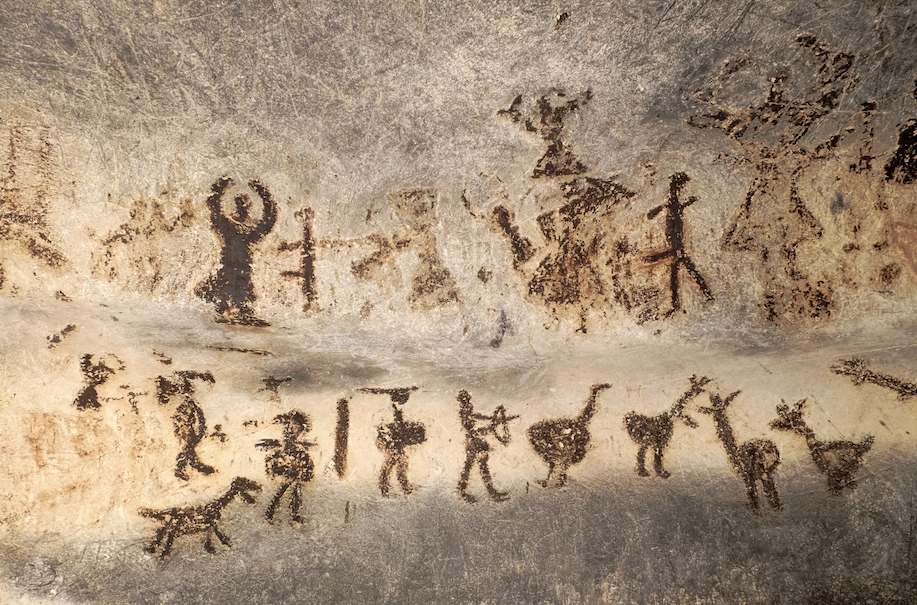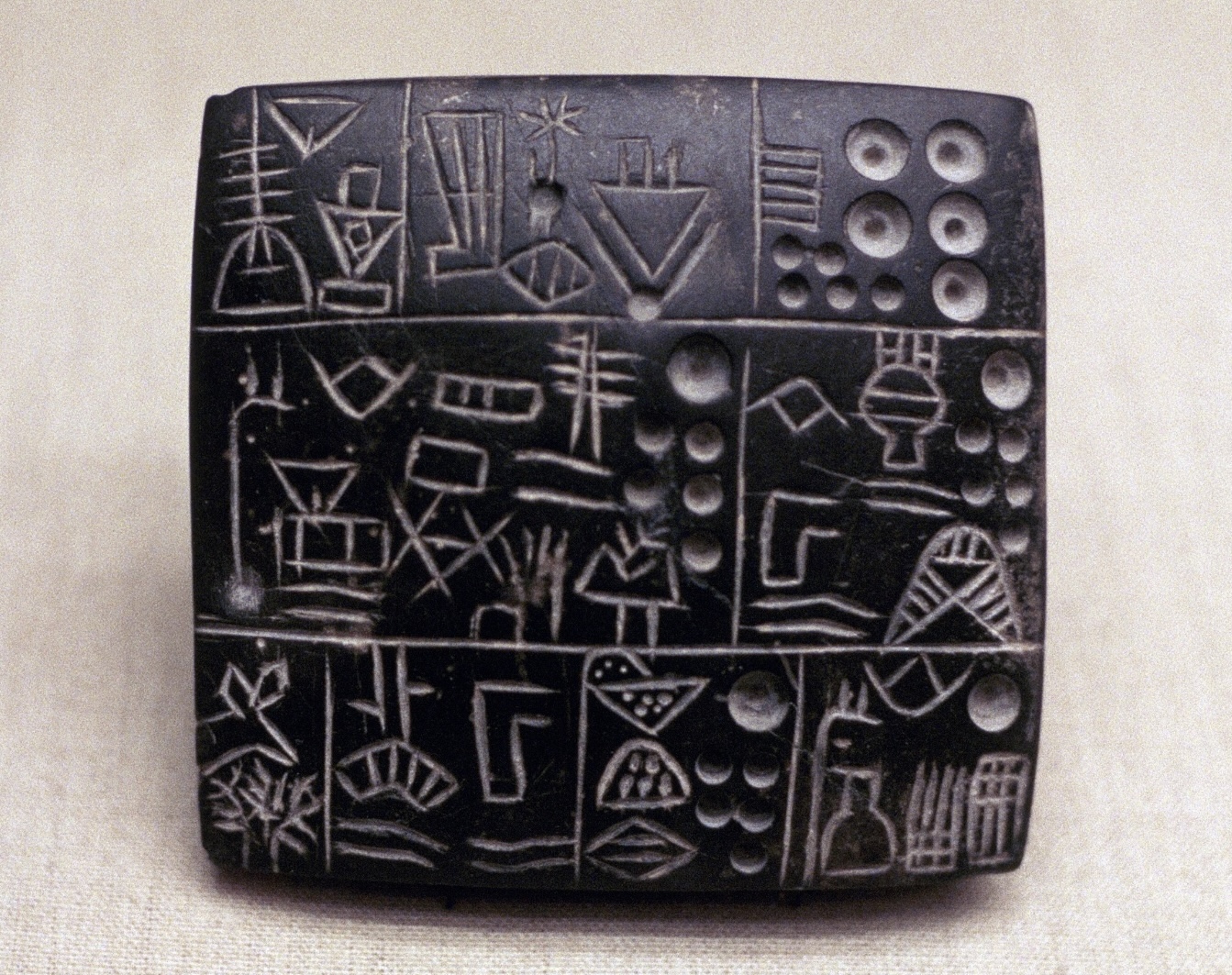Scenario Planning: More Than a Workshop Method – An Expression of Human Nature
Scenario planning is not just a tool for strategy processes in boardrooms or future-proofing business models. Our ability to imagine, anticipate, and prepare for what lies ahead is a fundamental aspect of our cognitive evolution and our progress as a species. Therefore, we can see scenario planning as a reflection of something much deeper – our inherent human capacity to envision multiple futures.
From the earliest days of Homo sapiens, humanity has thrived on its ability to imagine different realities and prepare for future uncertainties. Today, this ancient trait is the basis of a more sophisticated method – scenario planning.
The essence of our capacity to relate to uncertainties, however, has remained the same, and is no modern invention: Representation is an intrinsic part of who we are. Representation is the act of giving form to an idea, a theory, or a story by externalizing thoughts and experiences. It is what the Swedes call Gestaltning, and the Germans refer to as Gestaltung.
This makes scenario planning more than just a method for corporate strategy – it is a modern manifestation of an ancient cognitive skill. But to understand the role of scenario planning for our future, we must first understand the role of representation in human history.
Representation: Cornerstone of Civilization, Progress and Innovation
We often talk about the first, second, third, and now fourth industrial revolution. But before any of these developments were remotely possible, something essential had to take place, namely what the historian Yuval Harari calls the Cognitive Revolution1.
Harari describes the Cognitive Revolution as a pivotal moment around 70,000 years ago when Homo sapiens developed the ability to think and communicate in complex ways. It was essentially about humans developing advanced representation skills – language, art, and symbolic thinking – that allowed early humans to share knowledge and to cooperate on a larger scale than before. This, Harari argues, was crucial for the development of large, cooperative, and sophisticated societies.
Nonetheless, 70,000 years ago the word ‘raplexity’ (rapid + complex) would probably not have gotten a lot of attention around the campfire; innovation was a lot slower than it is today. For thousands of years following the Cognitive Revolution, human societies were primarily oral cultures, with knowledge passed down through direct communication or observation. Information was transient and bound to the presence of individuals and their memories, limiting the ability to build upon past knowledge or imagine future possibilities on a greater scale.
The Evolution of Representation: From Cave Paintings to Digital Media
We don’t know exactly when the first visible and lasting expressions of representation emerged, but cave paintings, such as those found in Lascaux, France, and Altamira, Spain, are some of the earliest examples of human representation. These paintings date back over 30,000 years and depict animals, human figures, and abstract symbols. By transforming shared experiences into visual symbols, early humans not only communicated but also built communal identity and cultural practices. This collective act of creation likely contributed to the formation of social bonds, ritual practices, and early spiritual beliefs.

Fast forward to around 5,000 years ago. Writing systems like cuneiform in Mesopotamia and hieroglyphics in Egypt emerged. Writing allowed for the recording of laws, transactions, and historical events, which in turn enabled another level of complexity related to societal structures and governance. It facilitated trade, standardized communication, and helped maintain records that could be referred to across generations. The written word was crucial in the rise of organized governments and the spread of religious and philosophical ideas, contributing to the formation of sophisticated cultures and empires.
To give a relatable example: The idea of imagined realities ties into how we use representation to construct social and economic systems, like capitalism. The concept of money, to mention one conceptual abstraction, is a shared representation that only works because people collectively agree on its value. This is a clear demonstration of how powerful representation can be in structuring societies and economies, and how essential it is in the process of creating the new.
As the sociologist Stuart Hall argued in his groundbreaking Representation: Cultural Representations and Signifying Practices2, representation is not merely about mirroring the world but about actively constructing it. Through the representations we create—whether in art, politics, or economics—we shape how ideas, institutions, and frameworks come into being. It is through representation that the seeds of new perspectives are sown and nurtured.
The socio-psychological roots of representation
Representation is about translating thoughts, feelings, and experiences into forms that others can perceive and understand, whether through language, art, or gestures. How we model and interpret the world around us is key to creating mental maps and theoretical frameworks. And more importantly, it helps us create shared understanding of complex systems, and to communicate ideas about them more effectively.

On a more humanistic level, our urge to engage in representation and sense-making is related to a social and psychological drive to create narratives that give meaning to our experiences as social creatures. Humans are natural storytellers. It is through stories that we make sense of our lives and the world around us. The drive to develop new representations of our world and the future, then, comes from a deep, almost instinctive need to explore, understand, and express our experiences. It is a way for us to share these experiences, to relate our stories with the stories of other humans. It is about expression and connection. Taken to an emotional extreme, it is a way of saying “This is what I see, feel, or believe. Do you see it too?”
In these processes of representing our experiences, we often discover new perspectives or ways of understanding them, which can transform how we think and feel. Done through mechanisms like conceptualization, abstraction, and pattern recognition, this can lead to new cognitive pathways, such as creative thinking, emotional processing, and empathy development.
In summary, while representation is an important artistic and cultural activity; it is also a fundamental – and fundamentally human – cognitive tool that enhances our ability to understand and manipulate the world. It is this ability that has allowed humanity to evolve and achieve the technological, social, and economic progress we see today. In so many words, this is the essence of cognitive development, which is what progress and innovation consist of. From cave paintings to NFTs, the welfare state, capitalism, cryptocurrency and generative AI. What will come next?
Scenario Planning as Modern Representation
Today, the tradition of representation continues in new forms. The cave wall has been replaced by social media platforms, and the written scroll by digital blogs and videos. We represent our lives through Instagram photos, express our thoughts and create narratives through tweets and TikTok stories. Entire communities are today created in virtual spaces. The digital age has turbo charged the art of representation, making it possible to connect with millions instantly and shape culture and society in real time.
As trivial as these expressions of representation might seem, we should pay attention for they are part of shaping minds, common narratives, and the theories of the world – and consequently the actions – that will produce tomorrow’s world and physical reality.
This is where scenario planning comes in.
In the seminal book Scenario Planning: The Link Between Future and Strategy3, futurist and founder of Kairos Future Mats Lindgren, describes scenario planning as a methodical process designed to map out diverse possible futures, helping organizations to not just anticipate change, but actively shape their response to it.
Scenario planning thus serves as a modern extension of our ancient capacity for representation by helping us visualize and prepare for different potential futures. Our ancestors used art, religious beliefs and stories to make sense of their world. We can use scenario planning to make sense of ours. By representing complex systems, insecurities and potential outcomes, it is a sophisticated cognitive exercise to navigate uncertainty and achieve desired outcomes.
Conclusion: Embracing Representation to Navigate the Future
Let us revisit Harari’s emphasis on the link between the ability to represent abstract concepts, narratives and stories of the future on the one hand, and progress of homo sapiens on the other.
We live in a world where we are urgently in need of new solutions. Younger generations are losing faith in political, economic and democratic systems. Nations are unable to reach sustainable international agreement on climate change. We are facing what has the potential to be the greatest technological disruption humanity has ever experienced. Geopolitical developments remind us of the fragility of our social institutions and our own mortality.
In the final sections of Sapiens, Harari discusses the potential future of humanity, including the rise of artificial intelligence and biotechnology. He suggests that our ability to imagine and represent future possibilities will play a crucial role in shaping the direction of human development. Scenario planning, then, becomes more than a strategic exercise in a board room with C-level executives looking for how to update their business model (which, of course, it is an excellent tool for).
Scenario planning emerges as a contemporary reflection of our inherent need – and human capacity – to reconceptualize the world around us. Representation has always been a tool for reshaping reality. Scenario planning is no different. It empowers us to imagine multiple futures, confront uncertainties, and guide our organizations through complexity with confidence. By investing in scenario planning today, we aren’t just preparing for the future – we’re actively shaping it. And that is as human as it gets.
If you want to learn more about scenario planning as a tool and how you can use the method to future-proof the strategy and actively shape the future of your organization, get in touch with Johanna Danielsson.
[1] Harari, Y. N. (2015). Sapiens: A brief history of humankind. Harper.
[2] Hall, S. (1997). Representation: Kulturella representationer och betydelsebärande praktiker. SAGE Publications.
[3] Lindgren, M., & Bandhold, H. (2024). Scenarioplanering. Länken mellan framtid och strategi. Vulkan.
